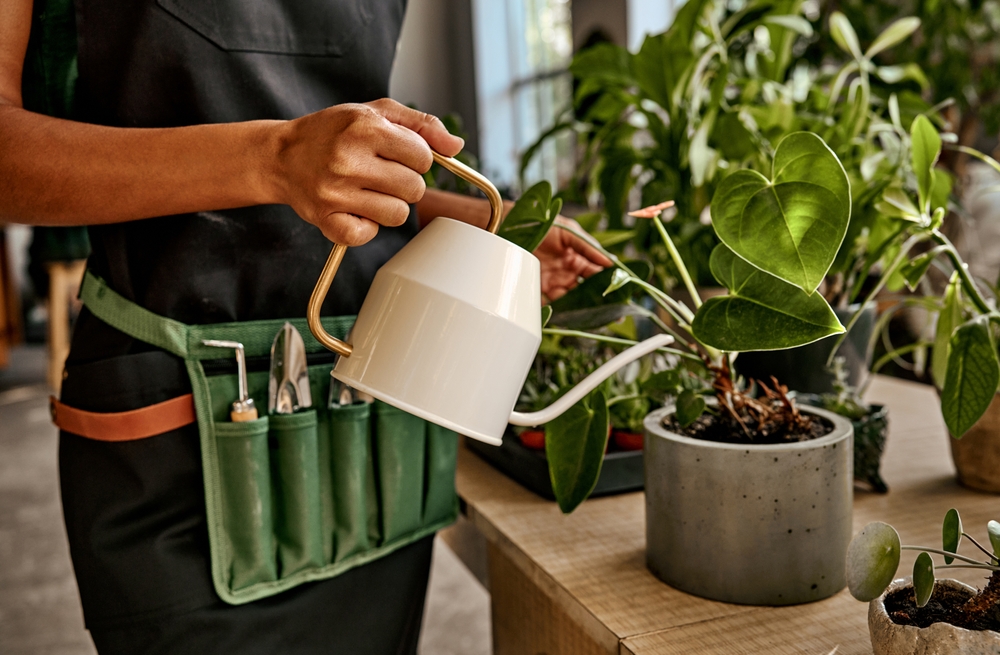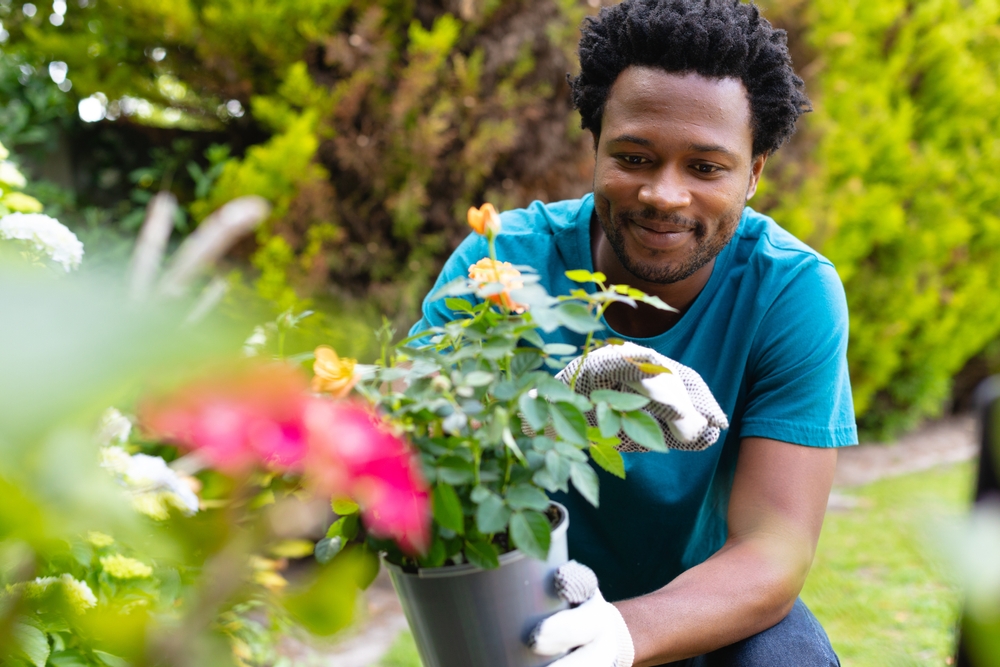
Image Source: Shutterstock
There’s nothing worse than seeing your beloved potted plants wilt and fade as the winter months drag on. For many plant parents, winter feels like a betrayal—sunlight dwindles, temperatures drop, and suddenly the vibrant green companions that once thrived are struggling to survive. But here’s the good news: keeping potted plants alive and healthy through winter is not only possible, it can be surprisingly easy when you know the right strategies.
With a few adjustments to light, water, and temperature, your plants can thrive indoors even when the world outside is frozen. Say goodbye to wilted leaves and hello to thriving indoor greenery all season long.
Understand Your Plants’ Winter Needs
Every plant is different, and understanding what your individual plants need is the first step to winter survival. Some thrive on cool, low-light environments, while others crave warmth and extra light. Researching your plant’s species will tell you how much sunlight it requires and whether it can tolerate indoor temperatures. Pay attention to soil type and moisture levels, as these can change drastically in winter when indoor air is drier. Treating your plants according to their unique needs is the key difference between survival and stagnation.
Maximize Sunlight Exposure
Winter sunlight is weaker and shorter, so maximizing what your plants get is essential. Position them near south- or west-facing windows where they can soak in as much natural light as possible. If sunlight is limited, consider using a grow light to supplement the natural rays and keep photosynthesis happening. Rotate your plants occasionally so every side receives equal exposure, preventing uneven growth or leaning. Even small adjustments in light placement can make a huge difference in keeping leaves green and vibrant.
Adjust Watering Habits
Overwatering is one of the most common winter plant killers, so it’s crucial to adjust your watering routine. Plants grow slower in winter, which means they use less water than they do in warmer months. Check the soil before watering; it should be dry at least an inch below the surface for most species. Avoid letting water sit in the saucer for extended periods, as this can cause root rot. Learning to read your plant’s water needs prevents unnecessary stress and keeps roots healthy.
Control Indoor Humidity
Indoor heating systems dry out the air, which can stress plants that thrive in more humid conditions. To combat this, group plants together to create a mini greenhouse effect, where moisture released from one plant benefits the others. You can also use a humidity tray filled with water and pebbles beneath your plants or run a humidifier nearby. Misting leaves can help some tropical species, but avoid overdoing it as excess moisture can invite mold. Maintaining consistent humidity helps plants retain their lush, healthy appearance throughout the season.
Monitor Temperature Carefully
Temperature fluctuations are another major threat to winter plant health. Avoid placing plants too close to heating vents or drafty windows, as sudden changes in temperature can shock them. Most indoor plants prefer a steady range of 65–75 degrees Fahrenheit during the day and slightly cooler at night. Keep tropical plants away from cold drafts, while hardier species can tolerate cooler conditions more easily. Consistent temperature control ensures your plants remain comfortable and continue to grow, even when it’s freezing outside.
Prune And Groom For Health
Winter is the perfect time to prune dead or yellowing leaves and remove any diseased foliage. This not only improves appearance but also prevents the spread of pests or fungal infections. Snipping off spent flowers encourages new growth and keeps energy focused on healthy parts of the plant. Regular grooming makes it easier to spot potential problems before they escalate. A little attention each week goes a long way in keeping your plants thriving until spring.

Image Source: Shutterstock
Fertilize Sparingly
Plants don’t need as much food during the winter, but a small boost can support overall health. Use a diluted, balanced fertilizer every four to six weeks for slow-growing species, and avoid heavy feeding that can burn roots. Over-fertilizing in winter can stress plants more than help them, so err on the side of caution. Adjust based on your plant’s appearance—dull leaves or slowed growth may require a gentle feed. Thoughtful fertilization ensures energy reserves are available for when growth picks up in spring.
Watch For Pests And Diseases
Even indoor plants are vulnerable to pests, especially in the winter when growth slows and stress levels rise. Keep an eye out for tiny insects, sticky residue, or powdery mildew, and act quickly if you spot them. Wiping leaves with a damp cloth or using gentle plant-safe sprays can prevent infestations from spreading. Isolating affected plants also protects your other greenery from infection. Vigilance is key, as catching problems early saves both plants and your peace of mind.
Rotate And Refresh Soil Occasionally
Soil can become compacted or depleted over time, reducing its ability to provide nutrients and proper drainage. Even in winter, occasionally loosening topsoil or repotting a plant can reinvigorate its growth. Adding a fresh layer of high-quality potting mix provides nutrients and improves aeration. This process also allows you to check the roots for rot or overcrowding, which are common issues in potted plants. A little soil refreshment goes a long way toward keeping your indoor garden thriving.
Keep Your Green Friends Thriving
Winter doesn’t have to be a death sentence for potted plants. By understanding your plants’ needs, adjusting light and water routines, controlling humidity and temperature, and keeping up with grooming and monitoring, your plants can remain healthy and vibrant all season long. The small, consistent efforts you put in create a major difference over the months, and come spring, your plants will reward you with renewed growth and energy.
Do you have winter plant tips or stories about plants that survived against the odds? Share your experiences, successes, and funny failures in the comments section below.
You May Also Like…
The Cover Crop That Revives Dead Soil Over Winter
Try These Types of Soils For Your Potted Plants
How to Save Your Pots from Cracking in the Cold (Without Buying New Ones)
6 Cold Weather Herbs That Keep Producing Indoors
How Cold Nights Improve Carrot Sweetness
Leave a Reply